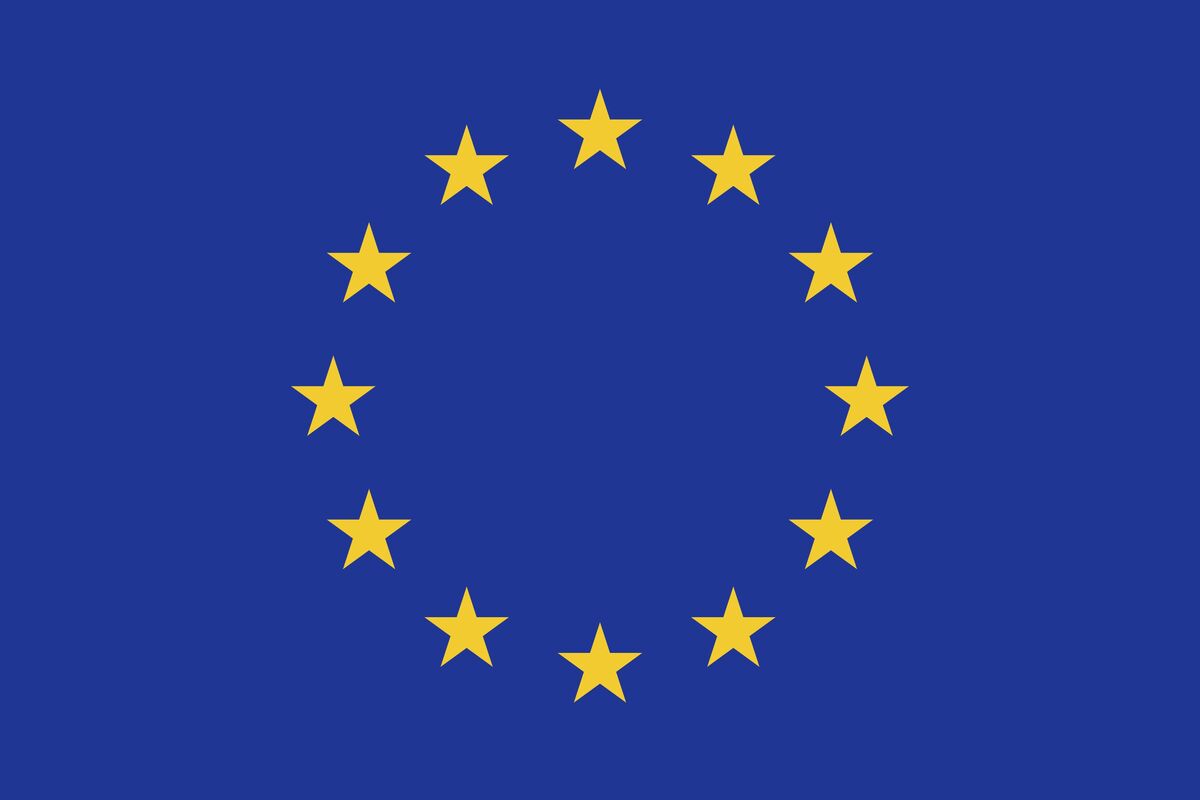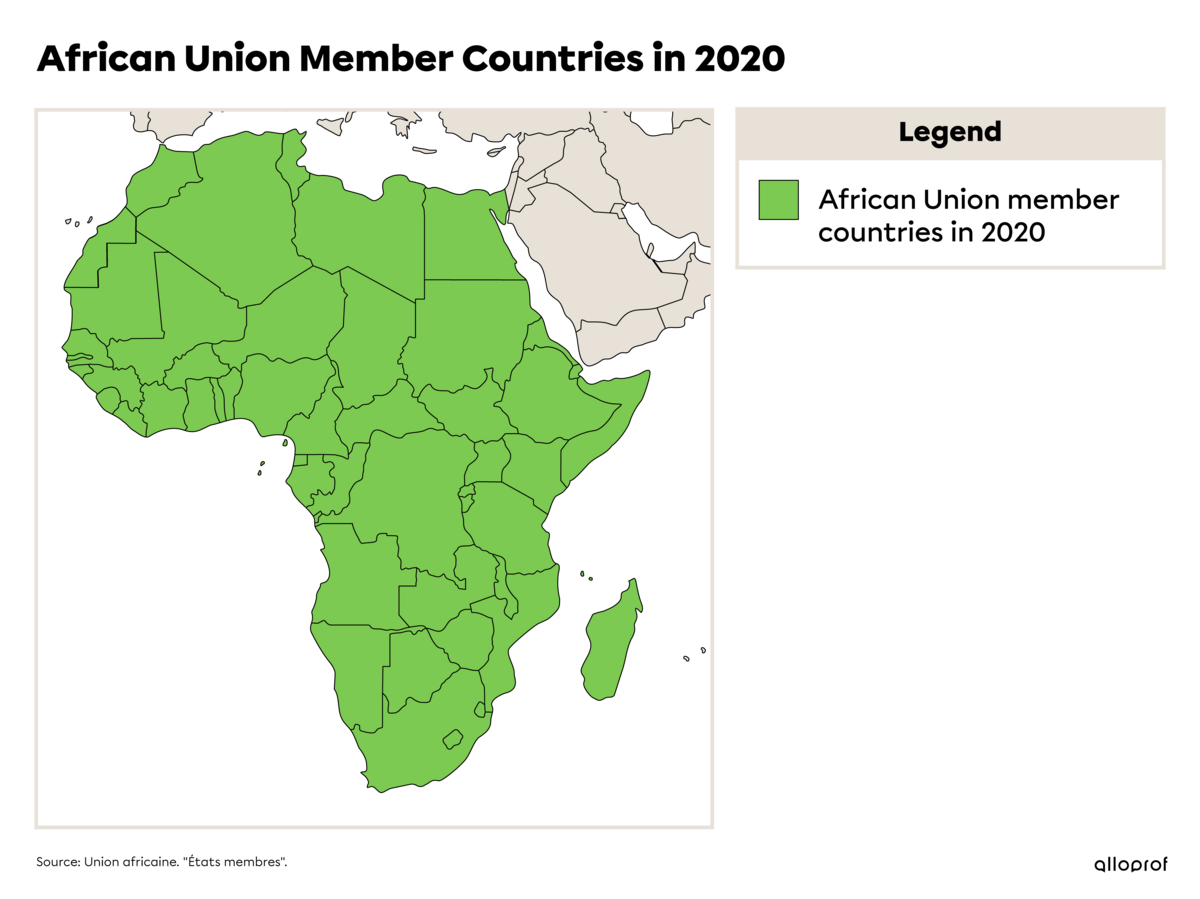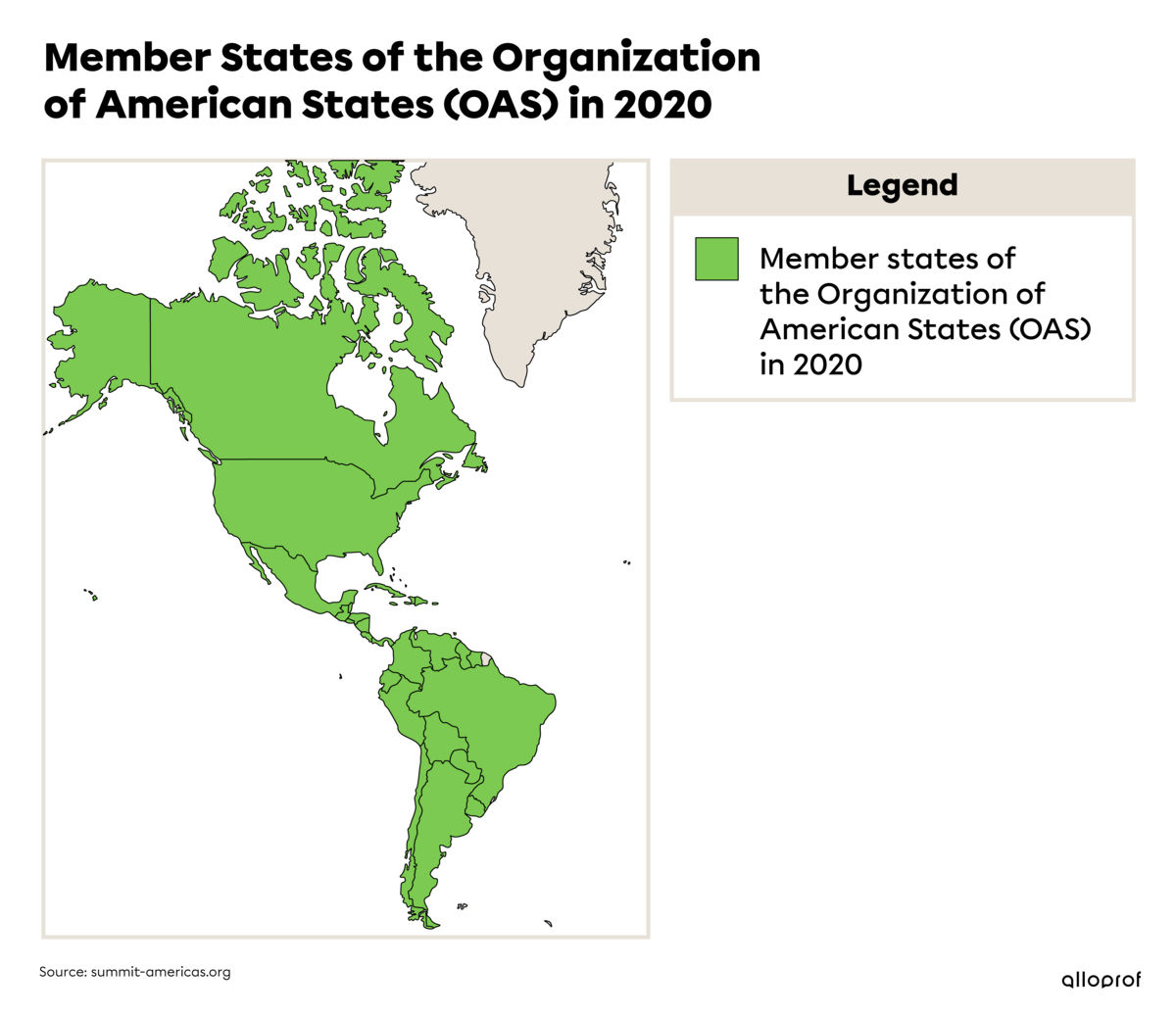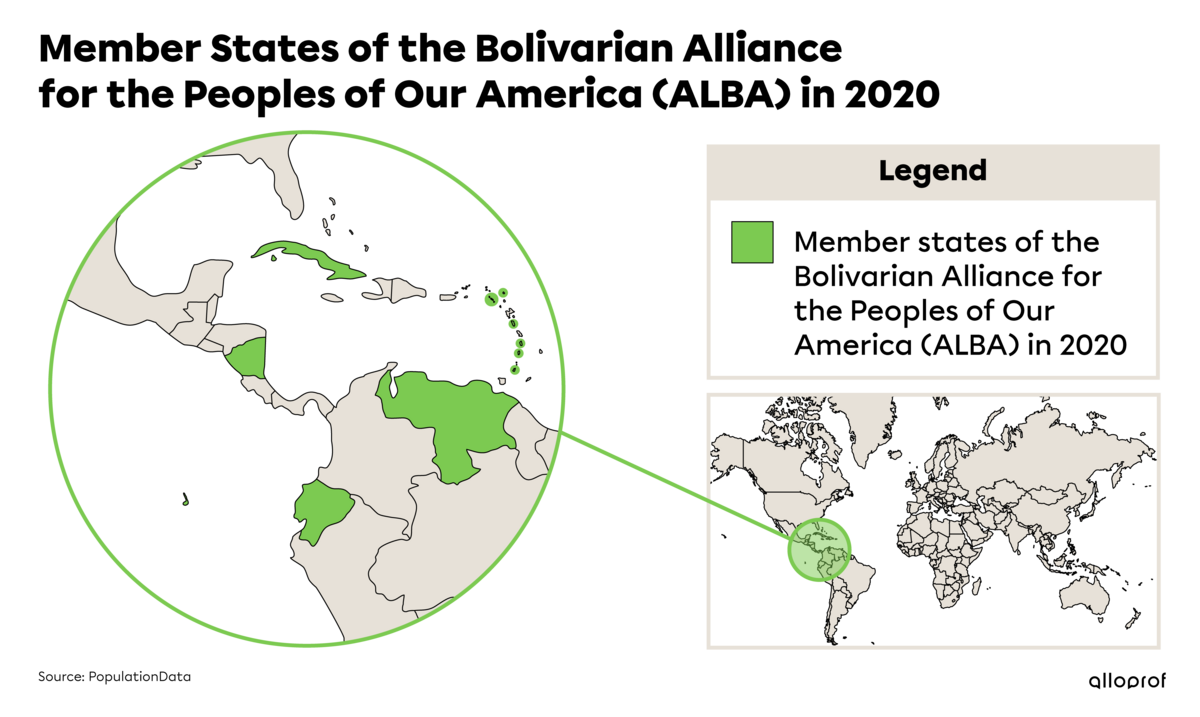Several states around the world come together to cooperate and work towards common goals. These goals can be economic, political, diplomatic or social. Some unions, such as the European Union, have already achieved a very high level of integration when it comes to adopting common policies. It is the largest and most integrated political union.
Integration refers to common political, economic, diplomatic or social policies adopted by all member states. The level of integration is determined by the number of common policies adopted as well as their scope.
There are other political unions established on different continents, such as the African Union (AU), the Organization of American States (OAS) and the Bolivarian Alliance for the Peoples of Our America (ALBA).

The European Union flag has 12 yellow stars in a circle on a blue background, representing solidarity and union among the peoples of Europe.
The European Union was founded in 1993. Before that date, it was known as the European Economic Community (EEC), but was not as integrated as the EU is today. The EEC, founded in 1957, was set up to create a common market to ensure the free movement of goods, workers, services and investments from the six founding countries (Belgium, France, Italy, Luxembourg, the Netherlands and the Federal Republic of Germany). Soon after, a customs union was established and common policies were adopted.
Between 1973 and 1993, six more countries joined, including the United Kingdom and Spain. In 1993, the EEC’s common market, called the Single Market, was created and removed non-tariff barriers to facilitate trade between members. The European Economic Community (EEC) became the European Union (EU) after the Maastricht Treaty was signed in 1992, and came into force in 1993. The EU has grown from an economic association to the largest political group in the world, with 27 member states.
In this context, barriers are used to limit trade between countries. This can be a tariff or non-tariff barrier. A tariff barrier refers to a price to be paid on goods.
When a tariff barrier is put in place, it limits trade by imposing a tariff, such as a customs duty, which is an amount to be paid on each product entering a country.
A non-tariff barrier also limits trade, but does not involve a tariff. It can take the form of quotas (product limits), norms (standards to which products must conform) and licences (authorizations to trade)
From 1957 to 2007, the number of EU member states increased from 6 to 28. Ten of these new states joined in 2004. In 2020, after the United Kingdom left the EU, known as “Brexit,” the number of member states went down to 27. The EU does not include every country in Europe since countries must meet specific criteria to join, such as:
-
stable institutions that protect democracy and the rule of law. Therefore, dictatorships or countries that persecute minority groups are not allowed to join;
-
a healthy economy that can compete within the EU, since a fragile economy would not survive in a common market;
-
the ability to adopt and effectively implement EU policies and laws, such as the free movement of labour, a common currency (the euro), among others.
When countries meet these criteria, they can apply to join the EU. If their application is favourably received by the EU members, negotiations begin. These negotiations take a long time because the candidate country has to integrate many European laws into its own national laws to ensure uniformity within the EU. Albania, Serbia and Turkey are currently in the negotiation stage. To facilitate this transition, the EU provides financial, administrative and technical assistance.
An institution is an organization governed by rules and laws that plays a specific role in society. Its role may be political, social, economic, religious, etc.
To better understand what an institution is, you can watch the video What is… an institution?.
With all that membership entails, it is understandable that not all countries can or want to be part of the EU. When a country joins the EU, its power is divided between a central government (the EU) and its own government. This causes states to lose some of their sovereignty.
-
Sovereignty is the absolute power of a state to govern itself by making its own laws and enforcing them within its territory. A sovereign state is independent, meaning that it cannot be controlled by any other state or institution.
To better understand what sovereignty is, you can watch the video Sovereignty and Interference.
-
The term supranational refers to an organization that is positioned above the governments of each state.The European Parliament is an example of a supranational institution, since it has greater authority than the political institutions of each European Union member state.
Unlike the United Nations (UN), the EU has its own government that can make decisions for the entire European Union. This is known as supranationalism, meaning that a central government can impose decisions on the governments of all member states.
Some responsibilities are shared between the central and state governments, while others are assumed solely by the EU. This limits the sovereignty of states, since, in some cases, their own government can no longer pass its own laws.
The European Union has adopted a common policy on fisheries (which is a shared resource) that defines a series of rules for the management of the European fishing fleet.
| EU Responsibilities | Shared Responsibilities |
|
|
The EU has created several institutions that redefine the powers of states, meaning their decisions take precedence over the decisions of the member states. In other words, these states lose a part of their sovereignty.
While some institutions are in charge of policies and laws, others serve the EU’s economic needs, such as the use of the common currency, the euro.
Political Institutions
Like in all democratic states, the European government is composed of institutions that share executive, legislative and judicial powers. Only the European Council is not a part of these three powers. Instead, it ensures political cooperation between EU countries.
The European CouncilMembers: Heads of state and governments of the 27 member states Role: Define the EU’s main political directions and priorities |
The European CommissionMembers: A President and a team of 27 Commissioners (one per member state) Roles: Propose new laws and ensure their implementation, draw up the budget and represent the EU’s general interest in international organizations, such as the WTO, independently of the states. It is a supranational institution, meaning it can impose its decisions on the governments of the states. |
The European ParliamentMembers: A president and 704 members of European Parliament elected every 5 years, representing the citizens of the member states Roles: Together with the European Council, it adopts European laws and the annual EU budget, and approves any further expansion of the EU |
The Council of the European UnionMembers: National ministers from each EU country, depending on the subject matter Roles: Adopt most EU laws jointly with the European Parliament, coordinate policies of EU countries and develop the EU’s foreign and security policies |
The Court of Justice of the European UnionMembers: One judge per member state (27 in 2020) Roles: Ensure that EU legislation is interpreted and applied in the same way throughout the European Union and impose financial penalties on EU institutions that infringe on the rights of an individual, company or organization |
Economic Institutions
The European Union has more than just political institutions to manage its decisions properly. It also has economic institutions that support its economic policies related to the budget, use of the common currency, etc.
|
Members: One member per member state (27 in 2020) Roles: Ensure the proper use of EU funds and improve the financial management of the European Union |
|
Members: Governors of the central banks of all EU member states Roles: Ensure price stability, maintain the EU’s economic and monetary policy and manage the common currency (euro) |
|
Members: One director per EU country and one director appointed by the European Commission Roles: Financing EU projects and promoting EU policies outside the EU
|
Economic institutions also help redefine state powers. For example, the European Central Bank brings together and manages the central banks of all the member states in order to make shared decisions across the European Union.
The European Union is not the only political union in the world. Others exist on various continents, such as North America, South America and Africa. Like the EU, these unions facilitate cooperation and collaboration between several countries with common interests.
With 55 member states, this union was created in 2002 and represents all African countries. The AU aims to promote the cooperation and integration of African States in order to foster the continent's economic growth and development.
For more details, see the concept sheet on other international organizations.

The OAS was founded in 1948 and promotes peace and justice among the 35 member states of North and South America. They aim to maintain their solidarity, strengthen their cooperation and defend their sovereignty, territorial integrity and independence. To achieve its goals, the OAS follows principles based on democracy, human rights, security and development.

ALBA was created in 2004 and brings together 10 South American and Caribbean States. This alliance promotes political, social and economic cooperation between the socialist countries of Latin America to strengthen their independence from Western countries. Unfortunately, tensions throughout Latin America limit ALBA’s influence.

Image in English coming soon